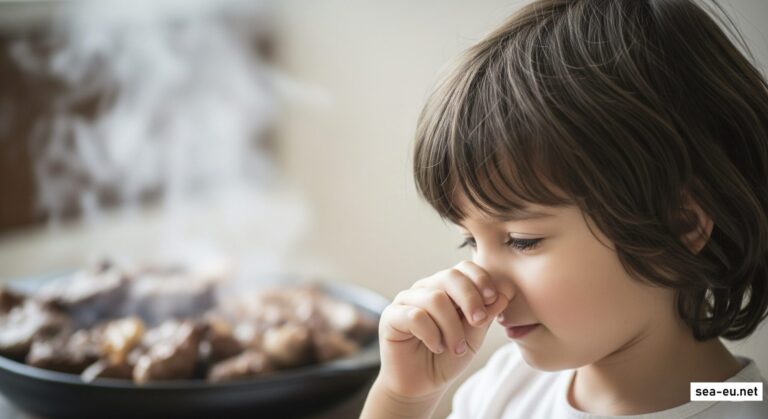At first, it might feel like another food quirk. Your kid picks at their dinner, pushes away a chicken nugget, or gags at the mere scent of bacon. You chalk it up to being “just a phase,” because what kid isn’t a picky eater at some point?
But what if it’s something more? What if the intense aversion isn’t just about taste, but about the idea of meat itself? What if it isn’t a passing phase but a deeper, persistent discomfort that might have a name?
Truth is, that could be early phases of carnophobia.
Though not widely discussed outside niche psychological circles, carnophobia is a very real and intense fear or aversion to meat. And for a small subset, it starts early.
This article isn’t about pathologizing your child’s preferences. It’s about offering context. Because when we understand what something could be, we’re better equipped to meet it with patience instead of pressure.
What Exactly Is Carnophobia?
Carnophobia is not a mainstream diagnosis in the way anxiety or depression might be. You won’t find it neatly labeled in the DSM-5 (the diagnostic bible for mental health professionals). But that doesn’t make it any less valid for those who experience it.
At its core, carnophobia involves a persistent and irrational fear or disgust toward meat. This can manifest through emotional, psychological, or even physical reactions, ranging from nausea and gagging to panic attacks or intrusive thoughts about animal suffering.
For adults, carnophobia might lead to chronic avoidance, elaborate meal rituals, or even strained relationships. For children, it can be trickier. Especially when the adults around them assume they’re just being difficult.
It’s Not Always About the Meat
Here’s where it gets nuanced. A child with early signs of carnophobia might not say, “I’m scared of meat.” They might not even understand that what they’re feeling has a name. But their body language will tell you everything you need to know.
- Gagging or retching at the smell of meat cooking
- Becoming visibly distressed at family meals that involve meat
- Associating meat with death, blood, or violence even if no one has explicitly taught them this
- Asking repeated questions about where meat comes from
- Refusing to eat meat even in “disguised” forms like meatballs or nuggets
- Saying things like “I feel bad for the animals” or “this feels wrong”
Many kids go through an “I love animals, I don’t want to eat them” stage. That’s normal and, in many cases, temporary. But when the reaction is visceral, when it’s linked to fear, disgust, or dread, it may be worth considering carnophobia as more than a phase.
Early Emotional Patterns to Look For
Kids rarely express fear the way adults do. They act it out. So when trying to understand if a child’s meat aversion is about preference or fear, look at how the behavior clusters.
Does your child:
- Show anxiety before meals if they know meat is being served?
- Avoid sitting near others who are eating meat?
- Cover their nose or mouth around meat?
- Fixate on animal imagery (cartoons, books) and then link it to meat aversion?
- Experience nightmares or intrusive thoughts involving animals being hurt?
None of these are “proof” of carnophobia. But together, they form a behavioral constellation that suggests the aversion might be tied to more than just pickiness.
Where Does It Come From?
There’s no single answer. For some, carnophobia may be rooted in early exposure to graphic content (think factory farming videos on YouTube). For others, it’s more emotional, tied to empathy or even trauma.
Here are a few possible contributing factors:
- Sensory sensitivity: Some kids have a hypersensitive sense of smell or texture aversion, and meat can be particularly triggering.
- Ethical distress: Children who feel a strong moral pull toward animals may internalize the act of eating them as wrong, leading to subconscious guilt or fear.
- Trauma: A disturbing visit to a butcher shop or farm, or even a negative experience like food poisoning, can imprint a long-lasting aversion.
- Modeling: If someone in the household strongly dislikes meat or is visibly disgusted by it, a child may unconsciously adopt those cues.
What Not to Do
If you suspect your child may have early signs of carnophobia, the worst thing you can do is dismiss it or try to override it with force. Phrases like:
- “You’ll grow out of it”
- “Don’t be dramatic”
- “Just try a bite, you’ll like it”
- “You’re embarrassing me”
…can do more harm than good. They don’t just dismiss the child’s current reality. They tell them their feelings aren’t safe to express.
Instead, try to hold space. Validate what they’re experiencing even if you don’t understand it.
What You Can Do Instead
Talk Openly, Listen Closely
Start with curiosity. Ask your child what it is about meat that bothers them. Use open-ended questions like:
“Can you tell me what you’re thinking when you smell meat?”
“What about it feels hard for you?”
Let them narrate their experience in their own words.
Respect Their Boundaries
Even if they’re not vegetarian in name, let them make choices that feel safe to their body. Offer non-meat protein options and involve them in meal planning. This creates agency, not defiance.
Limit Exposure Without Making It Taboo
Don’t make meat a battleground. If your child finds it upsetting, avoid turning every dinner into a confrontation. But also don’t treat meat like a forbidden, powerful object. Keep the tone neutral.
Check for Underlying Sensory or Anxiety Issues
If your child shows signs of generalized anxiety or has issues with textures, smells, or loud sounds, carnophobia could be a symptom of something broader like sensory processing sensitivity or OCD tendencies. A pediatric therapist can help untangle this.
Normalize Food Choice Diversity
Introduce them to the idea that lots of people don’t eat meat, and that’s okay. Whether it’s for religious, cultural, or ethical reasons, food choice diversity helps kids feel less “weird” about their aversions.
When to Seek Professional Help
If your child’s aversion to meat expands into a broader fear of food in general, weight loss, or social withdrawal (like refusing to eat at friends’ houses or school cafeterias), it may be time to consult a pediatric psychologist or occupational therapist.
Carnophobia itself isn’t inherently harmful. But when it starts interfering with nutrition, growth, or social development, intervention helps.
Final Thought
The aversion isn’t always about the food itself. It’s about what that food represents—violence, loss, guilt, disgust, or simply being out of sync with one’s body.
Some kids will outgrow their meat aversion naturally. Others will grow into it, making it a lifelong choice driven by ethics or psychology. Either path is valid.
What matters most isn’t forcing a resolution. It’s holding space for their experience, knowing that this, too, is part of their self-discovery.
Whether it’s meat or math or making friends, childhood isn’t about conforming to what’s expected. But it’s about learning to trust what your body and your heart are telling you. Even when it smells like bacon.



